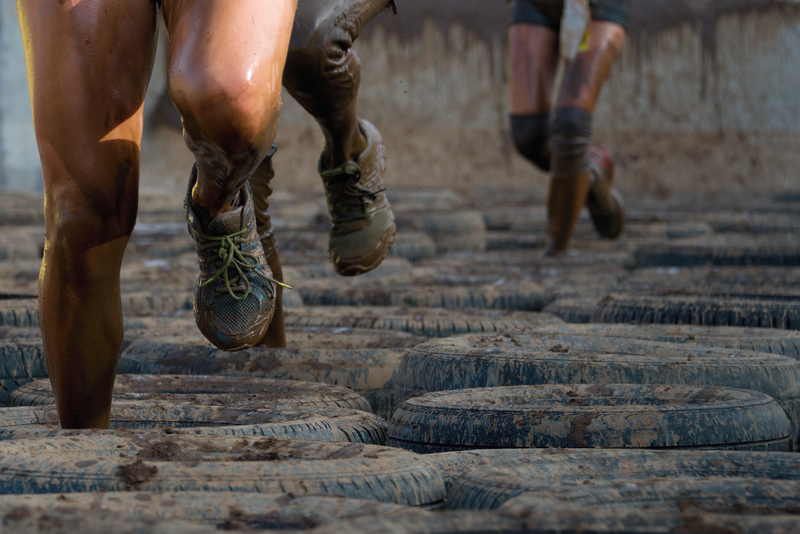How to Handle Used PPE Responsibly and Cleanly
As the world continues to face health challenges--from infectious diseases to industrial hazards--Personal Protective Equipment (PPE) remains an essential safeguard for workers, healthcare providers, and the general public. However, what happens to used PPE? Improper disposal or careless handling can lead to contamination, environmental harm, and health risks. This comprehensive guide explores how to handle used PPE responsibly and cleanly, offering both practical steps and regulatory guidance for safe, sustainable PPE management.
Understanding the Importance of Proper Used PPE Management
PPE, including masks, gloves, gowns, face shields, and respirators, is designed to protect individuals from exposure to hazards. Yet, once used, these items often contain potentially dangerous contaminants--pathogens, chemicals, or biohazards--that pose additional risks if mishandled.
- Health Safety: Improper handling may expose individuals to infectious agents or hazardous substances.
- Environmental Risks: Disposed PPE can contribute to pollution, clog water systems, or harm wildlife when not processed responsibly.
- Regulatory Compliance: Failure to manage used PPE according to state or national guidelines can result in hefty penalties.
Learning how to manage, dispose, and even recycle used PPE is not just good practice; it's a societal responsibility.

Types of Used PPE and Their Associated Challenges
Not all PPEs are manufactured from the same materials or designed for the same applications. Understanding distinct types helps in formulating effective handling strategies.
Common PPE Categories
- Disposable PPE (single-use masks, gloves, gowns, shoe covers)
- Reusable PPE (cloth masks, safety goggles, reusable suits)
- Specialized PPE (respirators with filters, hazmat suits)
Disposable PPE becomes a potential biohazard after use and is generally unfit for reuse or recycling, requiring particular care in disposal. Reusable PPE, on the other hand, can often be cleaned, disinfected, and used again, but requires careful handling to ensure no contamination occurs during the cleaning process.
Step-by-Step Guide: How to Handle Used PPE Responsibly
Below is a practical framework for managing used PPE, from removal to final disposal or decontamination:
1. Safe PPE Removal ("Doffing")
- Wash hands or use hand sanitizer before touching any used PPE.
- Remove PPE slowly and carefully, following recommended procedures to avoid contact with contaminated surfaces.
- Avoid touching your face throughout the process.
- Dispose of single-use items immediately in designated bags.
- Set aside reusable items for proper cleaning and disinfection.
2. Segregate Used PPE Immediately
- Use color-coded bins (often yellow or red for medical waste and blue/black for non-medical)
- Seal used items in tight, leak-proof bags to prevent spillage
- Label bags with the content description (e.g., "Used PPE--Biohazard")
- Prevent mixing with regular trash to avoid accidental exposures
Tip: In workplaces, provide training and signage on segregation procedures to aid compliance.
3. Handling and Storage of Used PPE
- Designate a secure storage area away from common workspaces or public zones
- Limit handling as much as possible--the fewer people handle the waste, the better
- Keep waste containers upright and closed until ready for final disposal
4. Effective Cleaning & Disinfection of Reusable PPE
- Wash reusable items separately from other laundry
- Use hot water and standard detergents
- Apply EPA-approved disinfectants where necessary (see product guidelines)
- Dry items thoroughly to inhibit microbial growth
- Inspect PPE for wear or damage after cleaning--immediately discard defective items
Note: Not all PPE is suitable for disinfection. Always follow manufacturer's instructions.
5. Disposal and Recycling of Used PPE
- Check local regulations: Know your area's guidelines regarding medical waste and PPE disposal.
- Medical or biohazardous PPE: Send to approved incineration or landfill facilities.
- Non-contaminated PPE: Review opportunities for recycling, especially for items like face shields, goggles, and certain plastics.
Environmentally-friendly PPE disposal is an emerging focus. Some manufacturers and third-party waste handlers now offer specialized recycling programs for PPE waste, such as:
- Collection boxes for businesses and institutions
- Plastic conversion programs (e.g., masks and gloves to energy or construction materials)
- Take-back schemes by PPE brands and suppliers
Reducing Environmental Impacts of Used PPE
The surge in single-use PPE during global health crises has intensified the issue of plastic pollution and waste management. Incorporating sustainable practices is crucial.
Strategies to Minimize PPE Waste
- Opt for reusable PPE where safe and practical (e.g., washable cloth masks vs. disposable ones)
- Choose eco-friendly materials (biodegradable or recyclable options)
- Implement PPE recycling at workplaces
- Educate staff and the public on proper usage and disposal
Warning: Do not flush PPE items, such as masks or gloves, down toilets or drains. This leads to severe blockages and water pollution.
PPE Disposal--What Regulations and Guidance Say
Several national and international bodies have published guidelines for safe personal protective equipment disposal. Guidelines may vary slightly across regions, but core principles remain consistent.
- OSHA (Occupational Safety and Health Administration): Recommends following existing standards for regulated waste and bloodborne pathogens, requiring sealed, labeled containers for used PPE.
- World Health Organization (WHO): Advocates for color-coded waste bins and incineration of contaminated medical PPE, particularly from healthcare settings.
- Local Authorities: Many municipalities have issued instructions on bagging masks and gloves, double-sealing, and prohibiting mixed disposal with household recyclables.
Always consult the latest regional guidance to keep your workplace and community compliant.

Frequently Asked Questions on Handling Used PPE
Can PPE be recycled?
Some types of PPE, especially made from pure plastics or metals, can be recycled in specialized facilities. However, this is rare for single-use medical PPE due to contamination risks. Check with your local waste management authority or recycling partners for options.
What should I do with used face masks at home?
- Place in a separate, sturdy bag
- Seal and tie off tightly
- Dispose of with general trash, not recycling
- Wash hands thoroughly after handling
How should businesses implement best practices for PPE waste?
Establish clear policies, train all employees, provide adequate waste bins, and ensure a regular collection schedule to minimize risks and environmental impact.
Are there alternatives to disposable PPE?
Yes! Many companies offer washable masks, gowns, face shields, and other gear designed for multiple uses. Carefully clean and inspect after each use to ensure ongoing protection.
Conclusion: Our Responsibility for Clean PPE Management
Handling used PPE responsibly and cleanly is vital for individual safety, public health, and global environmental sustainability. Whether you are disposing of masks and gloves at home or managing PPE waste for a large organization, following best practices reduces risks, ensures regulatory compliance, and supports a cleaner world.
- Remove and segregate used PPE carefully
- Follow manufacturer and government guidelines for cleaning or disposal
- Explore recycling where possible
- Educate others on responsible PPE management
If we all commit to responsible PPE handling, we not only protect ourselves and others from harm but also take crucial steps towards a cleaner, healthier planet.
